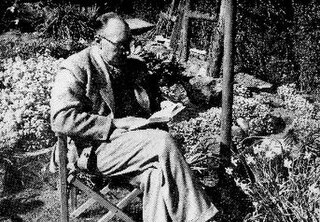
Charles Gaudichaud-Beaupré was a French botanist.

Kai Larsen was a Danish botanist.

Streptocarpus sect. Saintpaulia is a section within Streptocarpus subgenus Streptocarpella consisting of about ten species of herbaceous perennial flowering plants in the family Gesneriaceae, native to Tanzania and adjacent southeastern Kenya in eastern tropical Africa. The section was previously treated as a separate genus, Saintpaulia, but molecular phylogenetic studies showed that it was nested within the genus Streptocarpus.
George Don was a Scottish botanist and plant collector.
Hilliardia is a monotypic genus of South African flowering plants in the daisy family. It only contian one known species, Hilliardia zuurbergensis(Oliv.) B.Nord.

Murray Ross Henderson (1899–1982) was a Scottish botanist who did most of his botanical work in the Straits Settlements and South Africa. He took a position as a botanist in Malaya in 1921 and became curator of the herbarium in the Singapore Botanical Gardens in 1924.

Streptocarpus ionanthus is a species of Streptocarpus in the section Saintpaulia, commonly known as an African violet. It is native to eastern and southwestern Tanzania.
Kailarsenia is a genus of flowering plants in the tribe Gardenieae of the family Rubiaceae. Its native range is Indo-China to West Malesia.

Larsenaikia is a genus of flowering plants in the tribe Gardenieae of the family Rubiaceae. Its native range is Eastern and Northern Australia.
Dalrympelea is a genus of flowering plants belonging to the family Staphyleaceae.
Darcya is a genus of flowering plants belonging to the family Plantaginaceae.
Hammeria is a genus of flowering plants belonging to the family Aizoaceae.
Iljinia is a monotypic genus of flowering plants belonging to the family Amaranthaceae. It only contains one species, Iljinia regelii(Bunge) Korovin ex Iljin
Ianhedgea is a monotypic genus of flowering plants belonging to the family Brassicaceae. It only contains one species, Ianhedgea minutiflora(Hook.f. & Thomson) Al-Shehbaz & O'Kane
Jagrantia is a monotypic genus of flowering plants belonging to the family Bromeliaceae. It only contains one species, Jagrantia monstrum(Mez) Barfuss & W.Till
Helmiopsiella is a genus of flowering plants belonging to the family Malvaceae.
Emarhendia is a monotypic genus of flowering plants belonging to the family Gesneriaceae. It only contains one species,Emarhendia bettiana(M.R.Hend.) Kiew, A.Weber & B.L.Burtt.
Jacobsenia is a genus of flowering plants belonging to the family Aizoaceae.
Gregbrownia is a genus of flowering plants belonging to the family Bromeliaceae.





